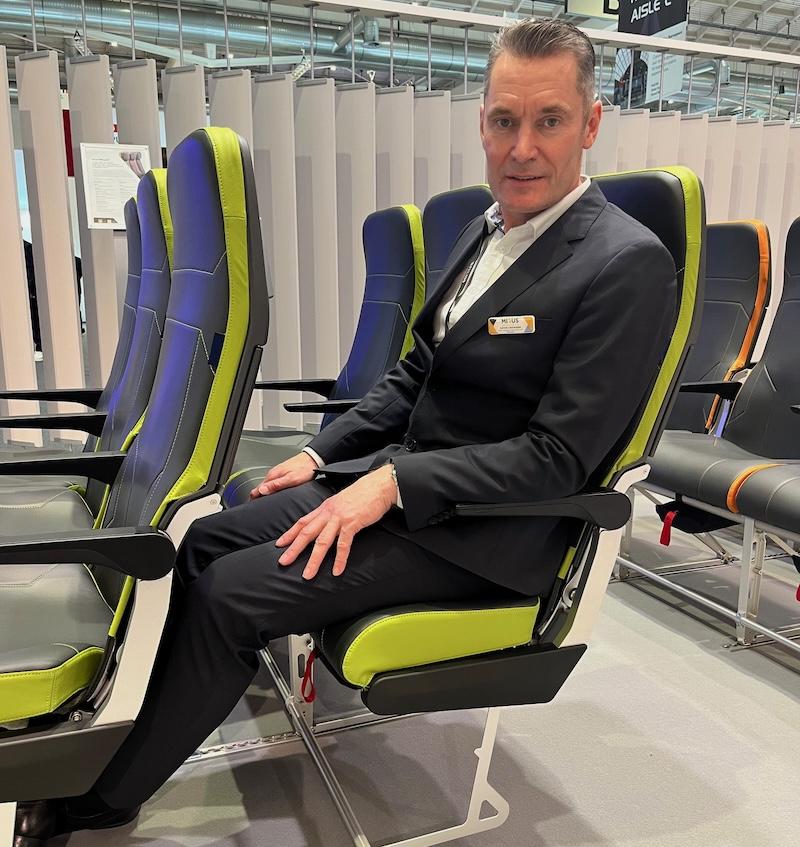This article is published in Aviation Week & Space Technology and is free to read until May 10, 2025. If you want to read more articles from this publication, please click the link to subscribe.

Kevin Crowder, Mirus' new products development manager, shows off the Hawk Duo.
HAMBURG—Mirus Aircraft Seating has launched its new reclining economy seat, Hawk Duo, here at the Aircraft Interiors Expo.
Designed for the single-aisle economy market sector, Hawk Duo is more than 20% lighter than its predecessor, weighing in at less than 8.5 kg (19 lb.) per passenger. The UK-based company says it achieves this without compromising performance or robustness.
Among the seat’s design features are an expandable polypropylene base and a carbon diaphragm forming part of the seatback. A full carbon seatback is not required, said Mirus’ new products development manager, Kevin Crowder, because more traditional materials such as aluminum can still provide the necessary stiffness, together with light weight, when used as part of the design.
Mirus says Hawk Duo is suitable either for operators operating full-recline economy cabins, or as a more premium offering when paired with the company’s Kestrel fixed-recline seat. LCCs in particular increasingly favor the latter type.
Hawk Duo will be certificated later this year for initial deliveries in the 2026 first quarter.
The sculpted seating surfaces have undergone rigorous design, pressure mapping and testing procedures, according to the company. The slimline armrests are designed to maximize seat width and space, while the seat has a 5-in. mechanical recline.
Optional features include power/USB integration, personal electronic device holders, various comfort foam and headrest options, and the ability to customize the color, material and design of dress covers.
With economy-class cabins now going as low as 28-in. seat pitch, Hawk Duo has been designed to maximize available living room, Crowder said. The seat’s contouring means that passengers sit further back. “You’re sitting in the seat, not on it,” he said.
Sculpturing of the headrest means that if the person in front reclines to the seat’s fullest extent, the headrest does not intrude unduly into the space of the passenger sitting behind, while the curvature of the seatback means that passengers can get back 2 in. of leg room, Crowder said.





